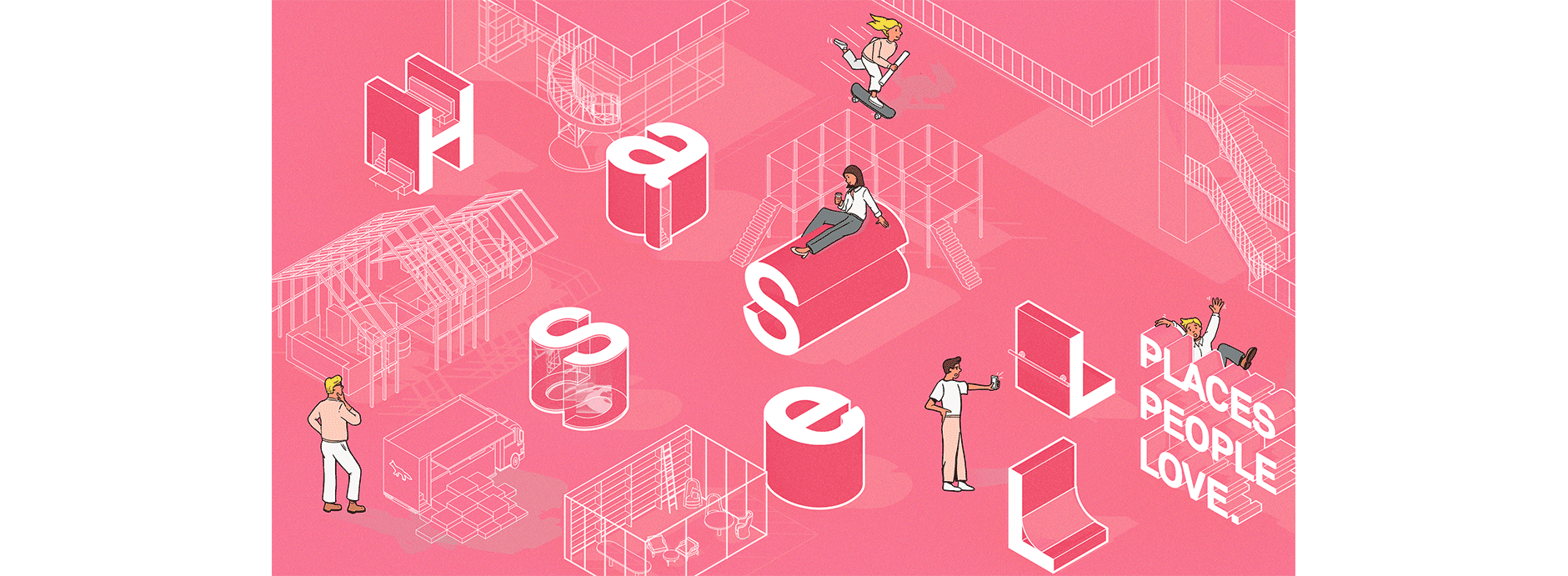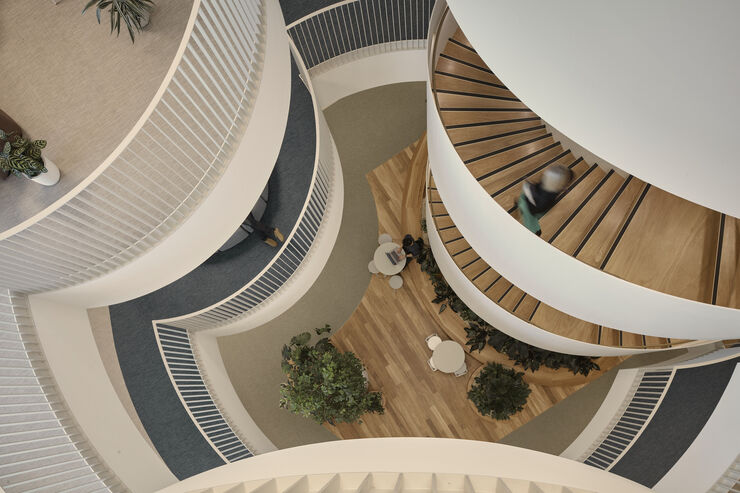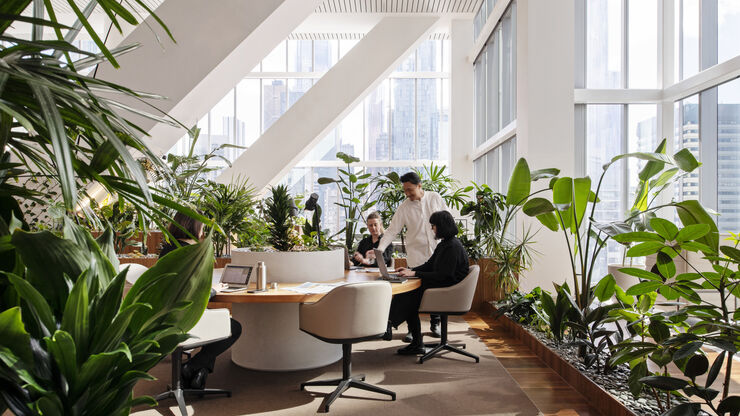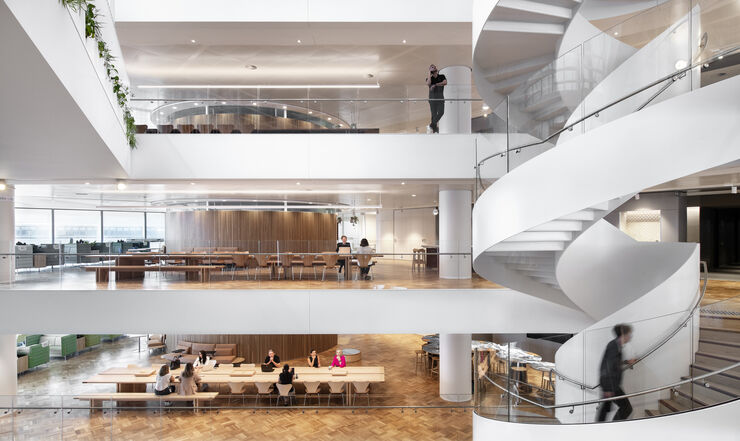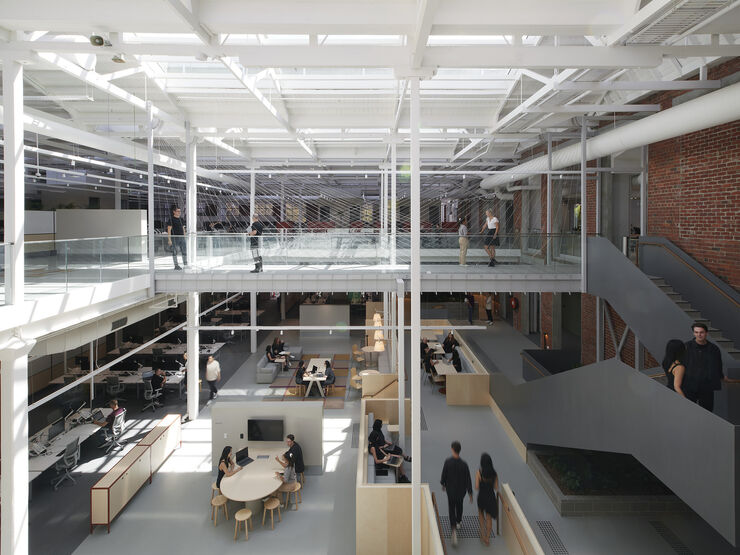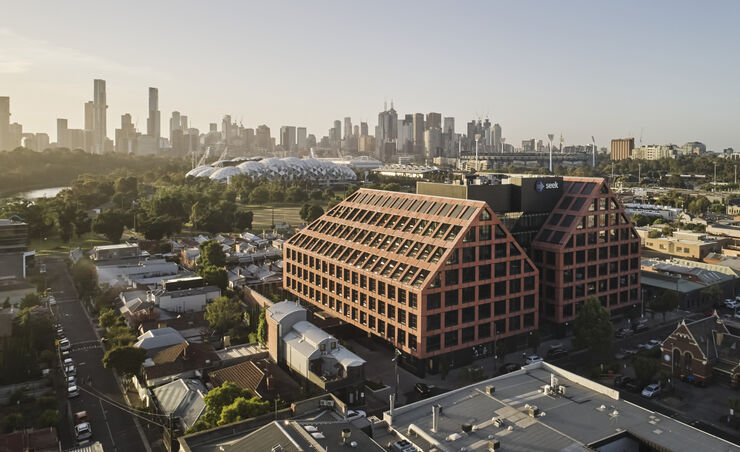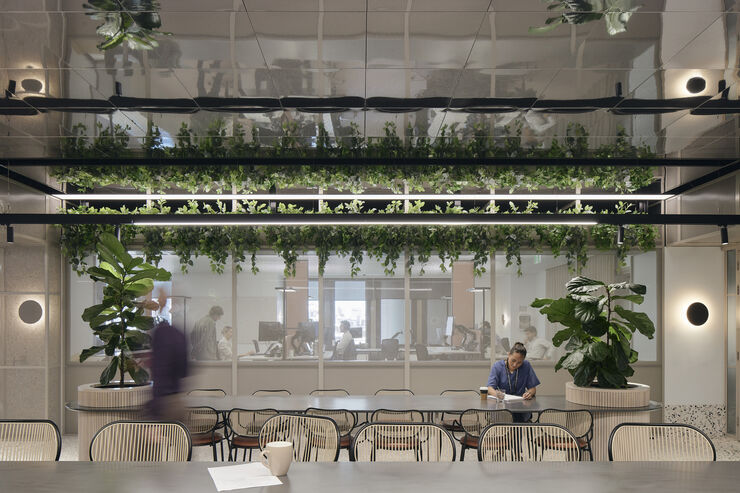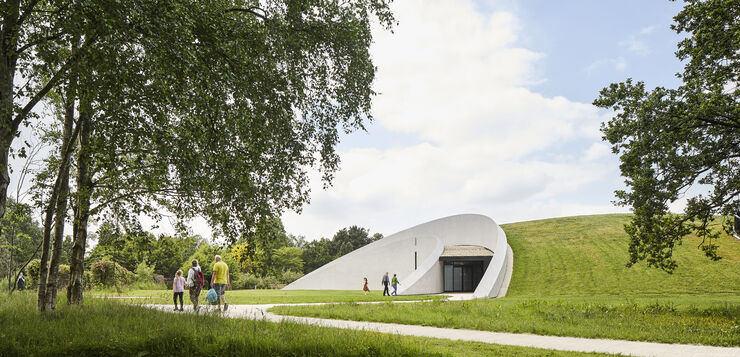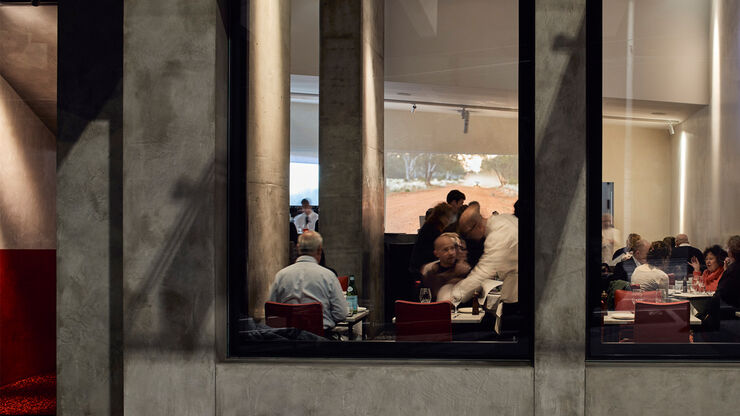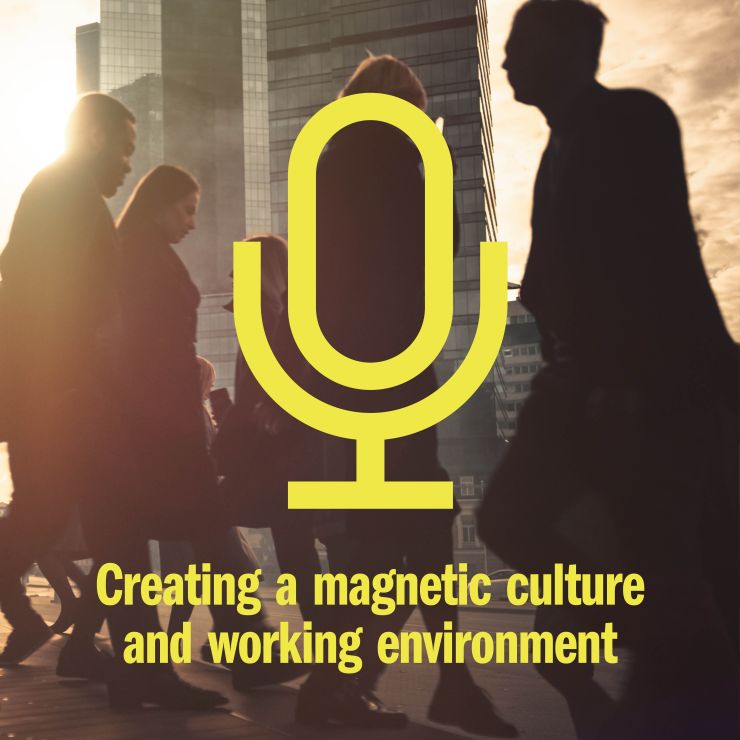Transcript
music fades out.
Andrew Low begins talking
I’m Andrew Low. I’m an architect, particularly interested in the way we can help our clients better connect to their people, to their organisational culture through spatial design. I’m really interested in shaping better spaces that connect emotionally with the users, but I’m not a behavioural psychologist, and I’m not an advertising brand or marketing guru. But Adam Ferrier is.
Adam Ferrier interjects
Self-proclaimed.
Andrew Low laughs, continues.
Adam is one of Australia’s leading consumer psychologists. He’s a brand strategist and an authority on behavioural economics. He’s the founder of creative consultancy agency, Thinkabell, who look to create measured magic by mixing scientific inquiry and hardcore creativity. I’ve known Adam since I was a kid. We met way back in 1977 at a great little primary school that was a melting pot of kids from various pre gentrification backgrounds, a suburb with an SIS barracks, a refugee accommodation complex, and amazing beaches that were always going to attract an interesting eclectic mix of people.
Adam Ferrier speaks
What a beautiful description of Swanee. It’s unreal. That beach you’re talking about where you grew up near was a nude beach, wasn’t it? And that was always really fascinating being a little kid near a nude beach.
Andrew Low responds
I don’t think it was the only reason we went to the beach. Tell me about your mix of interests and how they coalesced around brand thinking.
Adam Ferrier speaks
I was always interested in brands and people. I also used to play the Share Market a lot at school. In senior school there was only one landline. I used to, all lunchtime, I used to trade shares on the landline, and then at the end of lunchtime we used to hang up and go back to class. So, commercial culture and money brands was my thing, but I was also always been fascinated by people. So, I put those two interests together to become a consumer psychologist. So, I studied Psychology and Commerce, did my thesis on identifying the underlying constructs of cool people, what makes people cool. Then got into advertising, but always been about blending brand marketing and consumer and so on. But I always wanted to get into consumer psychology and marketing.
After working in the prison system for a while I became a cool hunter. I travelled around the world identifying cool trends and reporting back on those for people like Pepsi and Levy. Then, as I got a bit older and that became a bit more embarrassing to talk about, I am just got into advertising consultancy brand building, and now started Thinkabell a few years ago.
Andrew Low responds
So, in the pursuit of cool, wasn’t that just another way of looking for trends and how you could articulate the value in being able to pursue a trend?
Adam Ferrier speaks
I jus keep coming back to this local café of mine, and he found out what I did, and he said, “Oh, you have to tell me, you have to tell me, you have to tell me what the answer is because people for cool, people pay for cool.” And I know what he was saying was that just as long as he can make people feel really good and feel they’re part of the culture and so forth, then he can just double the price on his scrambled eggs, and-
Andrew:
And his margin goes up and his cost stay the same.
Adam Ferrier speaks
That’s right, that’s right. And that’s what it’s about. If you design the cool hotel, how do you know that hotel’s cool? So, the only way you know that hotel is cool is if cool people are going across the foyer. And just because I know you don’t want to ask, the five factors that make somebody cool are self belief and confidence, defying convention, understated achievement, caring for others, and connectivity. So, we’ve got a cool test you can do to find out how cool you are. But if you’re interested in Andy?
Andrew Low responds
Everyone at Hassell will be interested. I don’t dare take it.
Adam Ferrier speaks
But it is fascinating because it’s an avenue to brand growth and it’s an avenue to getting value out of a product, like if you go to a cool café versus an uncool one you’re going to be paying double for the products just because you’re eating in a cool place.
Andrew Low responds
So, designers look to use space to express an organization’s brand. An experience design looks to make brands live. We’ve talked previously about how you and your team use storytelling to help brands connect with consumers and their audience. Tell me how you look to find the right story in any given circumstance.
Adam Ferrier speaks
That’s a great question. I look to what’s true. In marketing there’s a whole lot of stuff about being customer obsessed and listening to the consumer and building a consumer insight, and I think all of that stuff in that rhetoric is noise. And I think often the answer is just looking at about something that’s true about the product or true about the organisation that you’re trying to build a brand behind, and then finding a story from that.
Andrew Low responds
So, do you spend the majority of your time trying to find the right story, and do you worry about that, or is it once you’ve found the story it’s in the way that you tell the story?
Adam Ferrier speaks
We spend a lot of time trying to find out what we think is a story that’s got the most legs, what can tell the most little sub stories or narratives or anecdotes of that one thing. So, that one story is what we would call a platform idea. Then every single have little narrative that needs to feed off that one single idea. So, we spend a lot of time trying to find an idea that’s true enough and ownable enough to that brand, but has enough foundation to tell lots and lots of anecdotes off.
Andrew Low responds
So, in some ways it’s a bit like finding a spine that you can build something around-
Adam Ferrier answers
Yeah.
Andrew Low responds
… Instead remain true to its core?
Adam Ferrier answers
Yeah. And the other term would call for that is a central organising thought for a brand. Then we see that central organising thought or that platform idea running right through what the organisation does. So, not just the advertising, not just the communications, but organizationally, how does that business feel? And we would say that also goes right into the space or the cars that people drive, the uniforms they wear, how the call centre speak to people. And very rarely have we actually thought about it as a physical space except for retail clients, but even a physical space is part of that as well. You look at what places like Google are doing to their central offices and their getting-brand. And I think it’s interesting that, I think brand, their thinking is becoming more and more into architecture and physical space design than it’s ever been before.
Andrew Low responds
Yes. So, we’re interested in the way that those ideas might coalesce. How can we utilise storytelling better in spatial design, because as you were saying previously, that’s the only mechanism you’ve got in lots of ways. You’ve got multiple media platforms that you might deliver something on, but it is all about the story, whereas we’ve got the ability to craft and shape space that people occupy. But do you think sometimes we forget about the storytelling when we’re shaping space?
Adam Ferrier responds
Yeah, I’ve seen that’s exactly right. I think because our business is storytelling, and we get given, let’s say we’re given a shampoo product, and then we have to be able to tell a story or a narration around that. You guys have got it much easier that you can actually physically design the thing that you’re then going to tell stories about. So, maybe, because you’re in the world of designing the actual stuff you don’t even necessarily need to worry about the story as much because the building or whatever it is that you’re designing is doing the talking for you, whereas we’ll say it’s the talking that does the heavy lifting. That’s where the value is.
We talk a lot about perceived value versus real value in marketing, and perceived value is what people are prepared to pay for. And when you can create perceived value it costs you less in goods and actually making things, but that’s what consumers are willing to pay for, so you can extract higher margin from any unit if there’s more perceived value in it. So, when you design a really cool building, and for whatever reason, it’s just really cool, you’ll be able to charge more for that building or the rents will be higher or whatever, just because it’s got a bit of cachet to it. So, when you design a building, do you have a central organising idea?
Andrew Low:
Usually yes. That’s the basis of the way the process works. But we do always end up with the degree of tension between what is on one hand a highly pragmatic strategy that you need to do and you need to get right, and then a fairly creative or bigger idea that’s going to help create and shape an identity for the users that use it. Then in between that spectrum there’s obviously building in all the other attributes.
Adam Ferrier:
Because the more you ask people what they want the more practical and rational the answers are, but that’s not necessarily what they really want, what’s really best for people.
Andrew Low responds:
That’s right. And across a pragmatic spectrum there’s a range of things that you need to manage, but that won’t necessarily create a volume or a spatial experience that’s ideally suited to whatever the client’s aspirations are.
Adam Ferrier responds
And it’s so nuanced. It’s really interesting how nuanced it is. Then you get back down to where it’s, if you ever hear yourself saying, “Trust me,” you know you’re screwed because nobody should trust anybody with something that valuable and all these dollars involved. And that’s why marketing sciences has been so important in our industry and behavioural economics, because it gives us a language to describe human decision making that our industry hasn’t had before. So, we’re able to talk about the value of an emotional connection versus a rational persuasion, or we’re able to quantify that through various findings and various studies that have been done. And that gives our clients confidence in one type of marketing over another, for example.
Andrew Low asks:
So, that balance between the rational and the emotional, how much does that come in? When does that come into your work? Is it different conversations with your clients or is it in the conversation during your design process?
Adam Ferrier responds
Mainly … Well, both. So, what we know in marketing is an emotional connections and emotionally based advertising is much more effective than rational based advertising, most of the time. The exception to that is when a new product is creating a new category and it has to convince people about what the actual thing is. But if you’re an insurer, say, or if you’re a financial institution in a well-established category, then what they’re trying to do is create an emotional connection, and all of the most effective campaigns that the vast majority of those are emotionally based. And there’s a pool of research and studies that you support with that.
So, you’ll see advertising that’s all really warm and emotional that doesn’t have that much to do or whatever it is that’s being sold at the time, but it’s linking that warm emotional feeling with a particular brand, then that is proving to be more effective time and time again than the equivalent ad talking about, if it’s say, financial services get a 3% interest rate or faster easier banking or whatever that rational message might be.
Andrew Low asks:
So, no different to our FreeState team that says people won’t remember what you told them. They’ll remember how you made them feel.
Adam Ferrier responds:
How you made them feel. Totally, it’s exactly the same. We’ve got lots of supporting evidence to substantiate that. Then when we show our clients emotionally based communications we can refer to the research that says that’s more effective. But maybe the world of architecture needs to create more of its own pool of knowledge about the fact that if you’re creating a building that makes people feel good, then there’s much more value in that and it should be working, and I’m sure you do work hard to quantify the value of people feeling good.
Andrew Low asks:
We talk quite a lot about an idea of habituation that you take an organisation into a new building and a new workplace in a new precinct in the city, and particularly if they’ve come from pretty ordinary spaces. There’s always this fantastic uplift because they’re into a space that’s new and they feel they’re valued and cared for, but over time that impact diminishes. Tell me about how important it is for brands to stay fresh or to renew their message, or is it more important for them just to repeat a message over a consistent period of time?
Adam Ferrier responds
There’s two contradictory answers to that. The first one is that marketing is very good at making the familiar feel new and the new feel familiar. They’re the jobs that needs to do all the time. Then the second thing it needs to do is be really consistent. So, humans don’t like to think where we’re hardwired to think as little as possible. So, if you show consumers their favourite brand, and their MRI scans, their brand doesn’t light up that much. Show them a new brand and their brain lights up a lot because there’s a lot of processing that needs to be done. If you have to work hard to process something, to work out what it stands for or whatever, you’re not going to buy. You’re just going to avoid it because it’s too much hard work.
So, we need to make it feel really easy to buy, and that’s why it relies so much on consistency. So, a brand is a promise kept consistently over time. Our promises, our deliberate promises, deliberate promises, deliberate. Therefore, when I’m shopping, I know what I want. I don’t have to think too hard. I know you’re going to deliver when I buy. The second bit of your question is, how to keep that fresh all the time. And that’s why new news or giving sparks of interesting activity are important, but the consistency is far more important than the new news to keep the sparks clean. People would like consistency rather than necessarily like change.
Andrew Low asks:
Do you think that’s connected to an idea of having a consistent spine and Space could learn from that, because our best spaces are an accurate reflection of the organisations that they’re hosting, and people can tell straight away when that works. And sometimes it doesn’t. Sometimes there’s a bit of a jar between what our clients say they want and who potentially we think they might be. But maybe there’s ways that needed … And hat’s why we engage with FreeState and Experience Design to actually allow Spaces to host multiple functions and do it potentially in a surprising way, but try and keep a consistent spine.
Adam Ferrier responds
Yeah, I think we’re articulating the and same thing. We would have a platform idea that last for years, but it would help to tell lots of different anecdotes within that same consistent spine or that same platform idea over time.
Andrew Low asks:
And brand theory has a hundred years of knowledge that’s built up where some of these has been sliced fairly scientifically. And a lot of the ability to measure emotionally how space connects with people, there’s not a huge amount of information. So, we’re interested in actually seeing what we can learn from brand theory and allowing spaces to potentially take advantage.
Adam Ferrier responds
Yeah. I think that sounds like a really interesting thing to do.
Andrew Low asks:
Yeah. And in shaping journeys, if you think about the way that well-designed spaces can help shape and highlight an emotional experience.
Adam Ferrier responds
That’s why I remember going in the lift of the QT hotel in Sydney, and when I got into the lift I played, I was on my own and played some song about being sad and lonely, and there were two people get in the lift that plays this song, Islands In The Stream. When three people get in the lifted it plays a song about a crowd. And that all happens automatically. But the value of that, how to quantify the value of that lift and that everyone talks about that, that particular lift, is really interesting as well.
Andrew Low asks:
Adam, that’s been fantastic. Thanks for your time.
Adam Ferrier responds
No problem. It’s great to be doing this with you. It’s great fun.
Andrew Low asks:
I’m Andrew Lowe. This is Hassell Talks.
